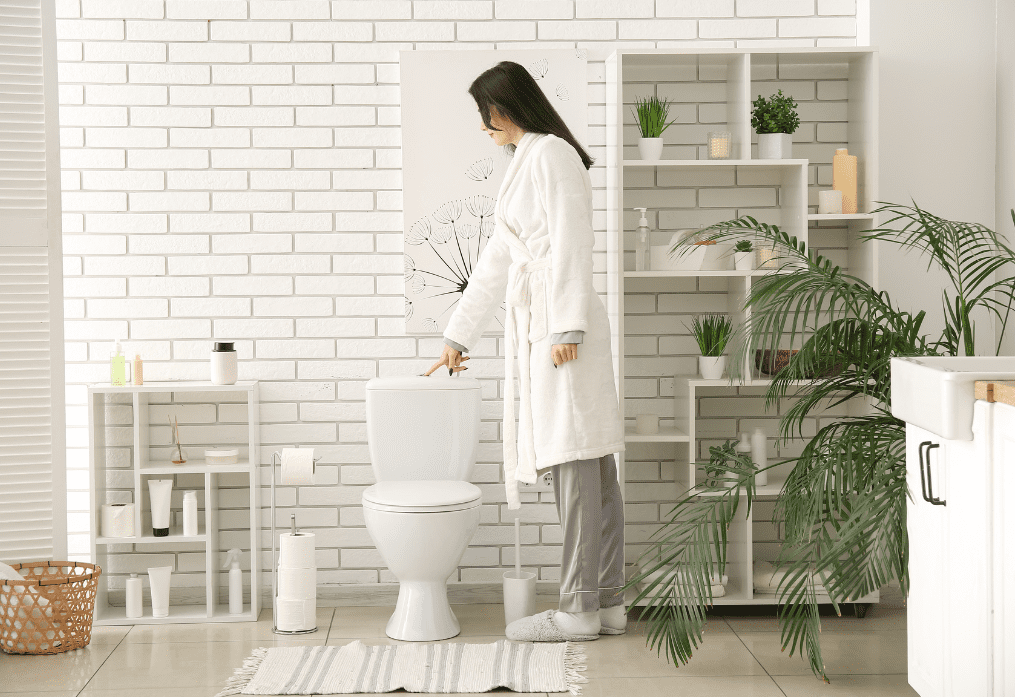
The Importance of Flushing a Toilet with the Lid Closed
The Spray Distance: What Happens When You Flush?
When you flush a toilet, an invisible plume of water droplets and particles is released into the air. This phenomenon, known as “toilet plume,” can spread over a surprising distance. Research indicates that the spray can travel up to six feet from the toilet bowl, contaminating nearby surfaces such as sinks, walls, and even toothbrushes. The force of the flush propels these microscopic droplets into the air, where they can linger and settle on various surfaces, creating a potential health hazard.
The force of a toilet flush is influenced by several factors, including water pressure, flow rate, and the specific flushing mechanism. Understanding these elements can help you choose the right toilet for your needs and ensure effective waste removal and cleanliness. For those interested in maximizing flushing power, pressure-assisted toilets offer a higher force flush, though they may come with increased noise levels.
The Hidden Dangers: Viruses and Bacteria in Toilet Plume
Toilet plumes are not just harmless water droplets; they can carry a variety of pathogens, including viruses and bacteria. Some of the common microorganisms found in toilet plumes include:
- E. coli: A bacterium commonly found in the intestines that can cause food poisoning.
- Norovirus: A highly contagious virus that causes vomiting and diarrhea.
- Salmonella: A bacterium that can cause severe gastrointestinal illness.
- Rotavirus: A virus that causes severe diarrhea, especially in young children.
- Hepatitis A: A virus that affects the liver and can cause serious health issues.
These pathogens can survive on surfaces for varying periods, ranging from a few hours to several days. For instance, norovirus can remain infectious on hard surfaces for up to two weeks, posing a long-term risk of infection.
Surface Longevity: How Long Do Pathogens Survive?
Understanding the survival time of these pathogens on surfaces is crucial for maintaining a hygienic bathroom environment. Here’s a breakdown of how long some common pathogens can persist:
- E. coli: Up to 24 hours
- Norovirus: Up to two weeks
- Salmonella: Several days to a week
- Rotavirus: Several days
- Hepatitis A: Several weeks
Given these survival times, it is clear that routine cleaning and disinfection are necessary to minimize the risk of infection.
Sterilizing the Bathroom: The Best Cleansers
It is important to use effective cleaning agents to ensure your bathroom is free from harmful pathogens. Here are some of the best cleansers for different surfaces:
- Toilet: Use a bleach-based cleaner or a commercial toilet disinfectant. Bleach is highly effective at killing a wide range of pathogens. Ensure you scrub under the rim and other hard-to-reach areas.
- Sink: An antibacterial cleanser or a mixture of vinegar and baking soda can be effective. For a thorough clean, let the mixture sit for a few minutes before scrubbing and rinsing.
- Walls and Floors: A diluted bleach solution or a commercial disinfectant spray can be used. Pay special attention to areas around the toilet and sink, where the toilet plume is most likely to settle.
Bathroom Plants: Nature’s Air Purifiers

Adding plants to your bathroom can help purify the air and reduce the presence of airborne pathogens. Some of the best plants for this purpose include:
- Spider Plant: Known for its air-purifying abilities, it can remove various toxins from the air.
- Aloe Vera: Not only does it purify the air, but it also has antibacterial properties.
- Peace Lily: This plant can absorb mold spores and purify the air, making it an excellent choice for bathrooms.
- Boston Fern: Effective at removing pollutants like formaldehyde and providing humidity, which can help keep the bathroom air fresh.
- English Ivy: Cleans the air of mold particles and fecal matter.
These plants improve air quality and add a touch of natural beauty to your bathroom.
Recommendations for a Hygienic Bathroom
- Always flush with the lid closed: This simple action can significantly reduce the spread of pathogens.
- Clean and disinfect regularly: Use effective cleansers to sanitize all bathroom surfaces, paying extra attention to high-touch areas such as light switches, faucets, and door and toilet handles. Don’t forget the toilet seat before and after sitting.
- Use bathroom-friendly plants: Incorporate air-purifying plants to help reduce airborne contaminants.
- Practice good personal hygiene: Wash your hands thoroughly after using the toilet and before touching any other surfaces.
Conclusion
Maintaining a hygienic bathroom is essential for preventing the spread of harmful pathogens. You can create a safer and healthier bathroom environment by understanding the risks associated with toilet plumes, regularly cleaning and disinfecting surfaces, and incorporating air-purifying plants. Always remember to flush with the lid closed and follow good hygiene practices to minimize the risk of infection for you and your family.









